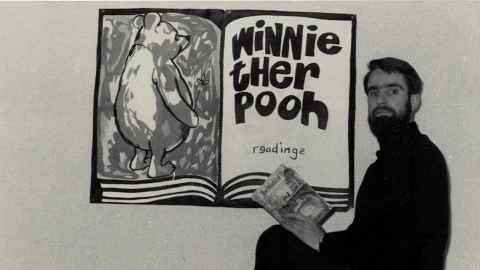Empathy, innovation and a rebellious streak were hallmarks of psychologist Peet Dowrick’s remarkable life and career.


Psychologist Peet Dowrick was a world leader in video “self-modelling,” a novel tool that helps people, including children with disabilities, achieve things that seem beyond their reach.
He died this month in Auckland aged 77.
Professor Suzanne Purdy, the head of the School of Psychology at the University of Auckland, paid tribute to Professor Dowrick’s academic insights, his warm personality, and his commitment to marginalised people.
“He was a man of enormous warmth, patience and compassion,” she said. A theatrical bent and his trademark purple jacket marked him out as a one-of-a-kind personality.
Professor Dowrick, a graduate of the University of Auckland, held an honorary position in the School of Psychology after returning from Hawai’i, where he was a Professor of Disability Studies.
He was sometimes called “father of video self-modelling.”
Self-modelling is a technique where people see themselves achieving a skill or behaviour beyond their current capabilities. Using video, editing can be key. Where a child is being supported by an adult, the adult’s help is edited out.


In one of Professor Dowrick’s early cases, the technique was successful for a girl with cerebral palsy who had trouble navigating obstacles on the floor. After watching her video, she moved around more easily.
Self-modelling has helped children with autism, depressed people, and many more, including sports people.
A very simple search of the University of Auckland library catalogue turns up nearly 1,500 references to the technique.
“Feedforward” – as opposed to feedback – was Professor Dowrick’s term for creating an image of success. A related process is positive self-review, in which a previously demonstrated skill (such as hitting a home run) is relived in the hope of replicating it.
“Peet had a warm smile, a ready laugh and a way of endearing himself to people,” said Professor Purdy.


Professor Dowrick wore his trademark purple jacket until it fell apart, and was also known for wearing different, brightly-coloured shoelaces, such as lime-green matched with bright red, according to his friend Tony Forster.
A lifelong enthusiasm for acting saw him perform in university shows and amateur theatre, and he also directed.
“In the 1970s, he became known for his excellent public readings of Winnie-the-Pooh stories to groups of people in Albert Park,” said Mr Forster.
A death notice said: “Peet’s career as author, researcher and mentor spanned over 50 years. Brilliant comic actor, superb performer of Winnie-the-Pooh, lover of wine and whiskey, a rebel against convention.”








































